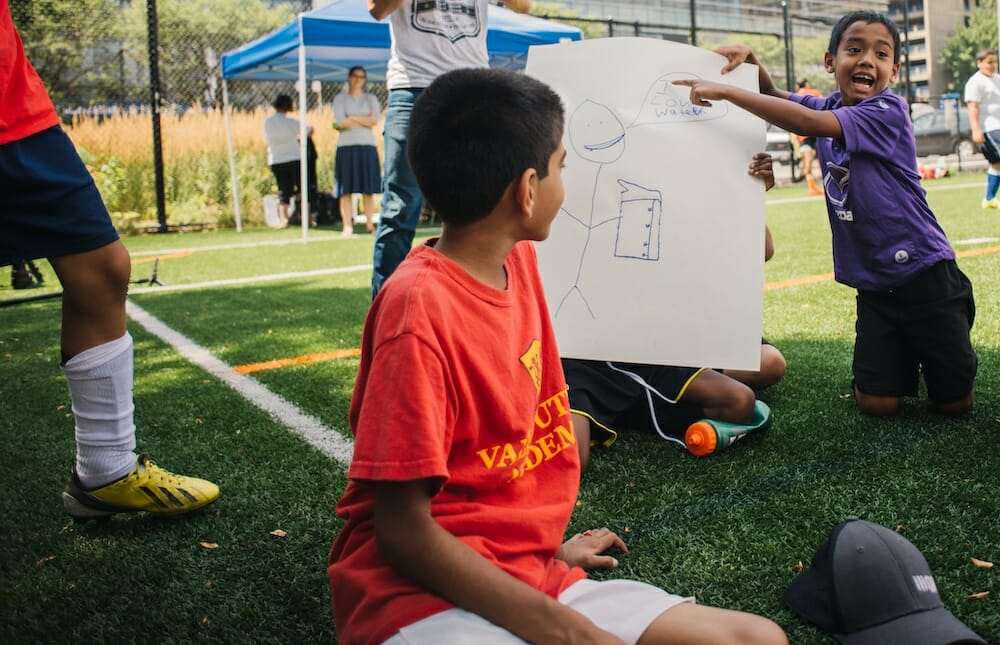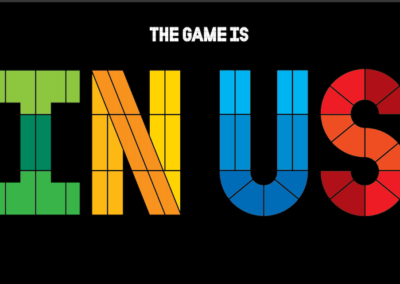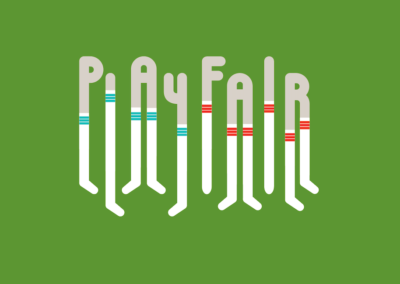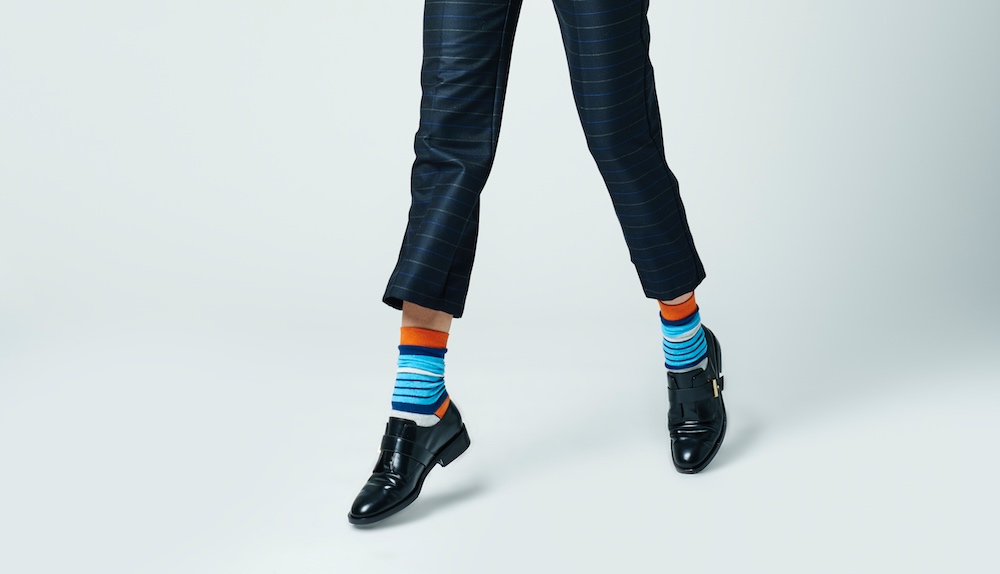A New Life for Impact
One Designer’s Journey from Tragedy to Catalyzing Change

Suzanne McKenzie is passionate about using design to make the world a better place, one impactful collaboration at a time.
By Suzanne McKenzie, Founder & CEO, Able Made; photos courtesy of Suzanne McKenzie & Able Made
You don’t get to choose when tragedy will strike — it invades like an unwanted guest. When a major change unexpectedly disrupts your life, you must cope while making sense of the unexplainable. This is the story of how a tragedy took hold of my life and how I regained control through the power of hope and the unwavering support of the design community.
Tragedy Strikes
At the ten-year mark of my corporate career, I felt something was missing. I had worked as a designer and project manager for amazing companies like Arnold Worldwide and Continuum, doing creative work for Fortune 500 accounts like Sprint, American Express, and Volkswagen. I also had the opportunity to work on social-mission-focused projects, like the Truth campaign against smoking — those were the projects that got me excited, where I was able to make the most impact. In April 2009, I decided to start my own business as a creative director and designer targeting clients who had a social-mission focus.
My business was just getting off the ground, and my personal life was blossoming. I was living in Boston with my husband Ucal. Ucal, who I had dated since college, was a guidance counselor at Newton North High School, a suburban school outside of Boston. Soccer was a driving force in his life. He was the head coach of the boys’ varsity soccer team and coached at Valeo Futbol Academy, a nonprofit focused on developing leadership skills in competitive athletes, regardless of socioeconomic status.
Ucal had a special connection to the urban youth with whom he worked. Many times he would give his players a ride to practices and games — he liked to have fun and sing in the car with the kids to melt away the stress they experienced in everyday life. He provided important guidance to those kids on and off the field. In addition to coaching and mentoring kids, Ucal also played semi-professional soccer for various teams in the Greater Boston area.
On May 30, 2009, my life turned into a nightmare. I will never forget receiving the call while standing in my dining room, hearing the news that Ucal had collapsed on the soccer field where he was playing a men’s league soccer game. We frantically got him from the field to the hospital, but he didn’t make it. I had lost my best friend and husband unexpectedly to sudden cardiac arrest. He was only 32 years old.
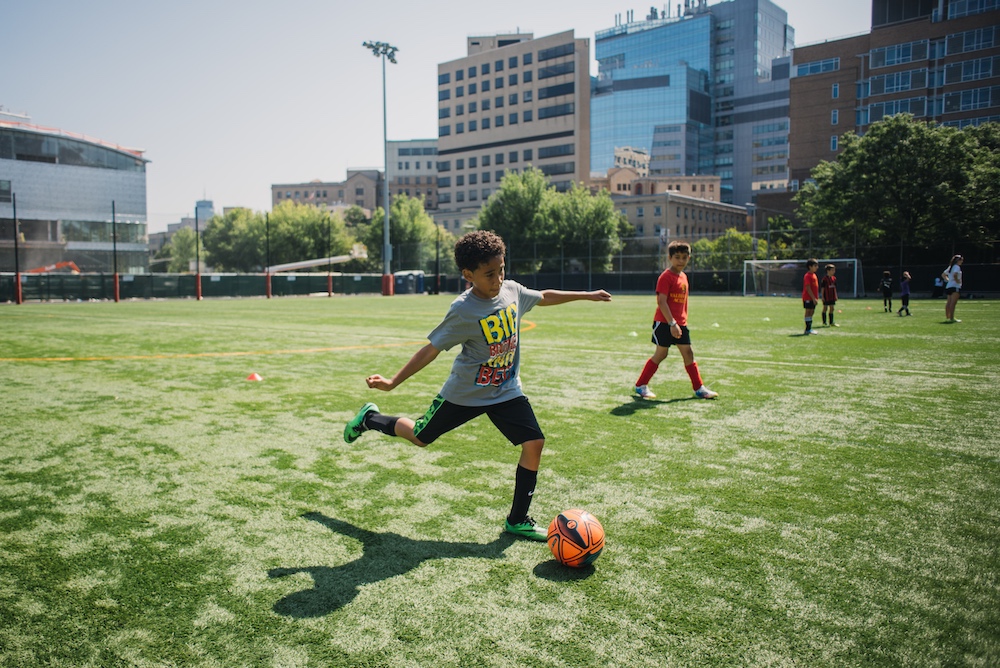
Design as a Beacon
The loss left me devastated and in shock. I often found it hard to get out of bed — I now understand how a surviving spouse may lose the will to live. The Kübler-Ross model (often called the five stages of grief) was something I didn’t know about at the time, but I experienced each stage, not necessarily in order: denial, anger, bargaining, depression, and acceptance. Depression was where I languished for a long time.
People deal with grief differently. The only way I could move beyond depression was to keep moving. From the moment I woke up in the morning, until I went to bed at night, I kept busy. In those first devastating days, weeks, and months that followed, design was not only my profession, it was a welcome respite, a lifeline of hope.
I set out to combine design and soccer to help foster positivity in the lives of others. Design has always been an emotional outlet for me. It’s a channel for releasing my creative juices to solve problems. Soccer was Ucal’s passion. Discipline, dedication, and determination — what Ucal called his three Ds — was his mantra for teaching life lessons to his players in the classroom and on the field. His mantra formed the principles I would use to move forward.
The Foundation
Shortly after losing my husband, with the help of my design network, I started the Ucal McKenzie Breakaway Foundation (UMBF), a nonprofit organization to honor Ucal’s memory and impact. The foundation would continue his inspiring work with urban youth through the sport he loved, soccer, and we used design as a tool to create every touchpoint.
At the start I made phone calls to introduce the idea of partnering with some of the leading sports and health organizations in the country. A lesson I learned early on: never be afraid to ask, because you can always get unexpected results. My requests led to partnerships with the New England Revolution, Boston Breakers, Whole Foods, We Got Soccer, Winsor School, America Scores, Valeo Futbol Academy, and more.
Together, we built a comprehensive offering that combined soccer with health education geared toward underserved urban youth. Design led the way. We researched and talked to families about the challenges urban youth face — these conversations directly informed the experience we designed for the kids. For example, we selected the Winsor School field as the place to run our programs because it was in the heart of the city — kids and parents could easily access it by walking or taking public transit.
We delivered our content and training via soccer clinics, indoor tournaments, and 3-on- 3 challenges. Soccer sessions included coaches from professional teams and colleges, and leading health organizations gave kids access to experts they wouldn’t normally have. Tony DiCicco, former coach of the United States Women’s National Team, led sessions for the foundation. David Suvak, the head coach of Emerson College women’s team, spent time talking to UMBF kids about college and ran soccer sessions for the kids with some of his college players. Boston Children’s Hospital led concussion education, Whole Foods ran nutrition and healthy eating sessions, a nurse gave kids hands-only CPR training, and CrossFit helped us combine hydration work sessions with poster-making. It was heart-warming to see the kids enjoy fresh fruits that were new to them, like apricots, tangerines, and star fruit.
In addition to designing the programming experience, we also designed and developed a line of products, with sales going to support the foundation’s work. I started with a core collection: designing a Nike athletic line of hats, jerseys, and jackets, as well as a wall calendar. For the calendar I once again asked for help. I approached designers and artists from around the country to make a piece of art inspired by the foundation’s principals. Contributions came in from Pentagram, IDEO, Design Army, Luba Lukova, Alan Dye from Apple, Chip Kidd, 2×4, UnderConsideration, and many other leading designers and firms. Everyone I asked said “Yes!” It was magical.
The poster calendar project was sold at the Museum of Modern Art in New York City and the Institute of Contemporary Art in Boston. These projects galvanized a community to help fund the foundation, and they raised awareness of our mission to bring health education to urban youth.
Design work for the UMBF calendar came from creative people across the U.S.
Able Made is Born
A year later, and based on the fundraising success of the athletic line and poster calendar I created for UMBF, I decided to work on the next collection of products to support the foundation. My search for collaborators and my never-afraid-to-ask attitude brought me to the offices of Vogue, then Rag & Bone. The founders’ of the fashion label had a passion for soccer, the perfect potential partners for products supporting UMBF. As I sat with the team at Rag & Bone, pitching a collaboration for UMBF, I realized that while they may become interested in our foundation, they were probably already passionate about their own causes. That is when the idea for Able Made came to me — to create a platform for supporting causes through thoughtful design collaborations.
I launched Able Made as an active lifestyle brand that inspires healthy living. Like UMBF, everything is design-driven. Our mission is to lead with bold product design, and give back through product sales — across the product line we give 2-25% of profits directly to causes. The brand also incorporates a commitment to responsible manufacturing in the United States, and we strive to find and develop innovative materials that have the least possible harmful environmental impact on the planet.
Collaborations fuel our impact. We’ve worked with Project Runway designers, Lifetime, Threadless, Public School, Pamela Love, the Council of Fashion Designers of America, and more — and we’ve helped support nearly 20 nonprofits including VH1 Save the Music Foundation, Pencils of Promise, Not For Sale, and others with a common mission to provide skill-building tools that empower people — just like UMBF.
The collaboration with Threadless started with meeting their founder, Jake Nickell. He greeted me at their headquarters, a converted FedEx distribution center in Chicago’s West Loop. As we passed an office made from an old Airstream trailer, walls filled with art murals, and their vast tee shirt fulfillment center, we started talking about Jake’s passion. “One thing that is very important to me is music in children’s lives,” he said. “I have a two-year-old and a five-year-old, and my five-year-old is already learning guitar.” After that meeting I aligned us with VH1 Save the Museum Foundation, a nonprofit dedicated to restoring music programs in America’s public schools, and raising awareness about the importance of music as part of each child’s education.
We created a global design challenge for a graphic tee shirt in support of music education. The Threadless community voted on our top 3 designs, the winning submission was from John Tibbott, a designer in the UK. His design was an illustration of a tree with bright leaves — the roots of the tree form the body of a guitar. The sale of the shirt raised thousands of dollars for VHI Save the Museum Foundation, which they used to increase music education in our schools.
After some great collaborations, we’ve even launched our own line of products to support causes we love — including our line of socks, the first collection of which, supported the High Line park in New York City. The collection has grown and has supported the American Heart Association, Fashion Targets Breast Cancer, and more.
Able Made Sock Collection helps support UMBF, and other non-profits, including the High Line park in New York City.
Impact on Young Lives
As Able Made grows, so does the Ucal McKenzie Breakaway Foundation — we continue to offer important support in the lives of families. When I look back on the first soccer camp with 50 kids in attendance, it’s amazing to see how the program has grown. UMBF is entering its eighth year and we’re creating a legacy of impact — to date we’ve worked with over 5,000 families. What started from a personal tragedy has grown into a powerful force for good. While there is more work to do, I’m proud of how far we have come and what we have in store for the future.
Design thinking can be applied to any area to solve problems — not just products, logos, or packaging, but also experience, education, and organizations. It has the power to help foster healthy lifestyles, build confidence and self-esteem in children, and change people’s lives. I’ve learned valuable lessons from my experience. What unfolded for me during the process of creating and building my business demonstrates the generosity, compassion, and endless reach of what the design profession can do to make life better. Design is a true catalyst for change, and a lifeline to many, including myself.
